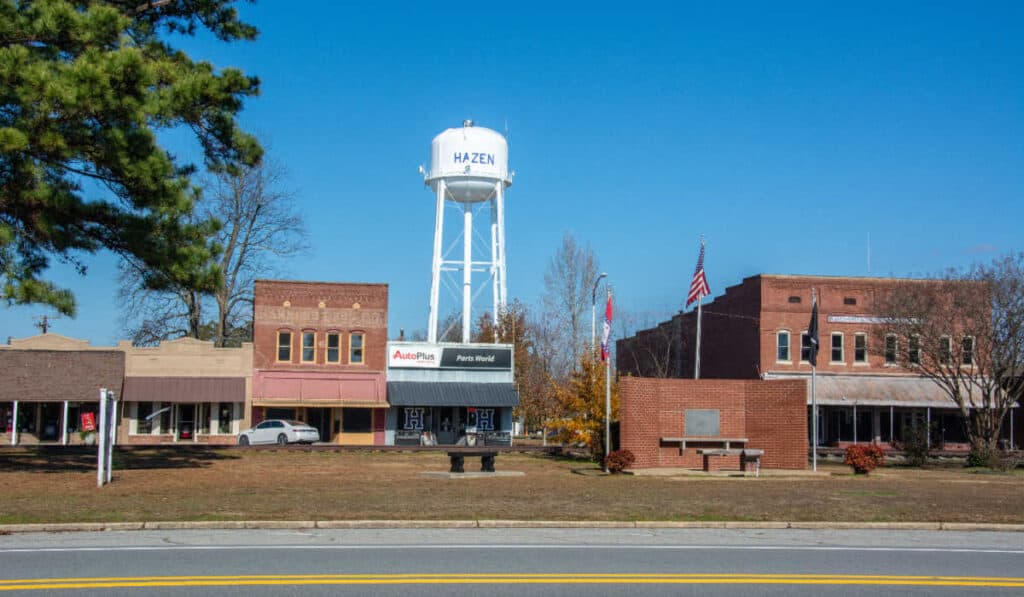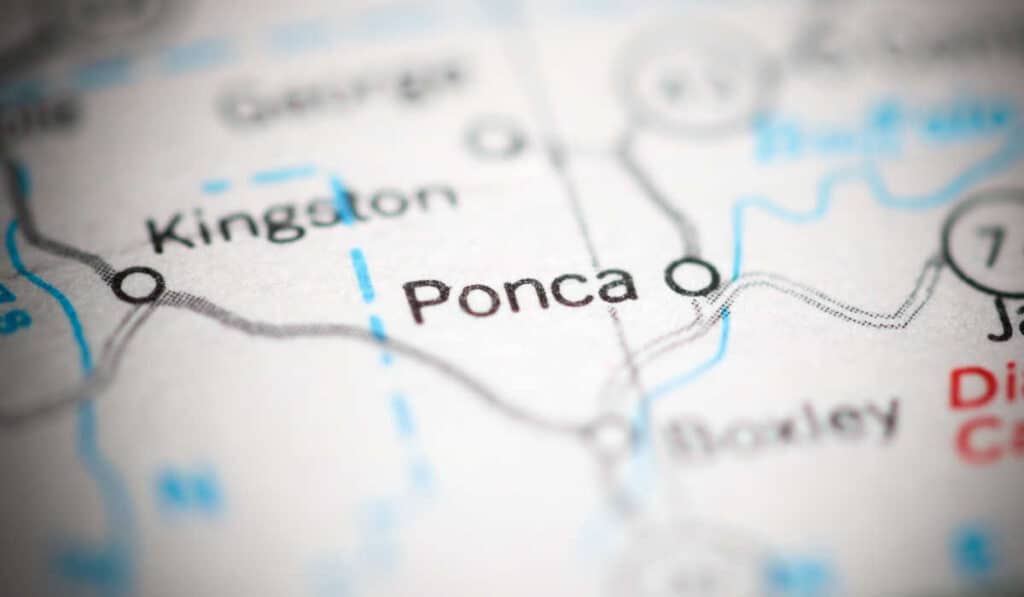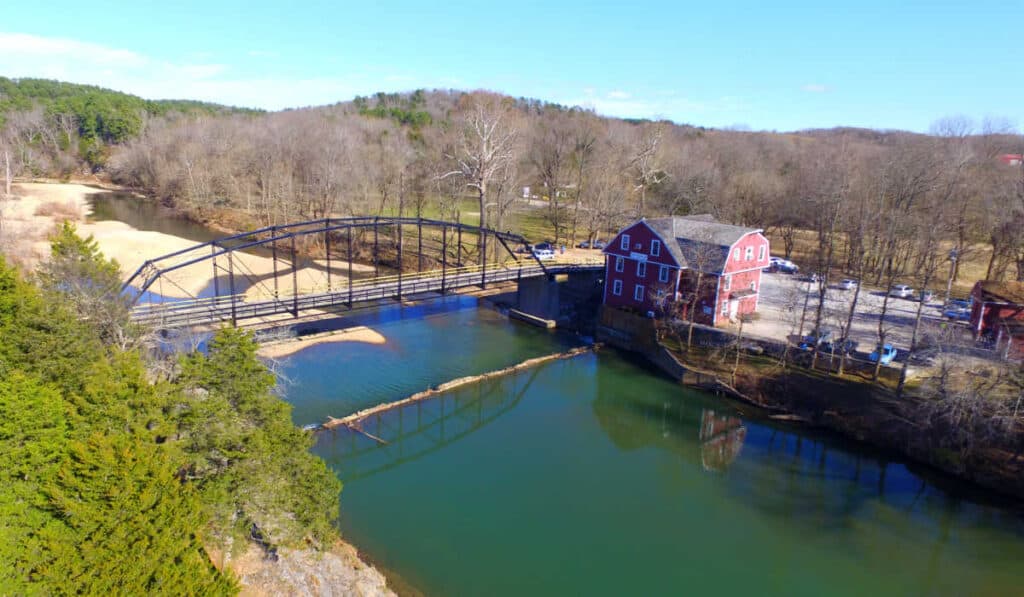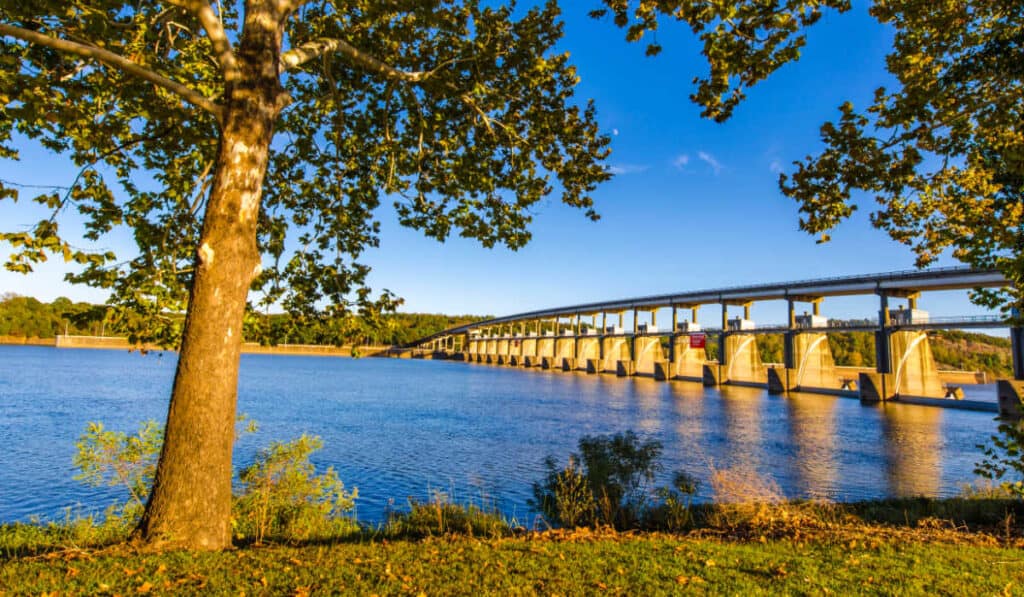Nestled in the heart of the Ozark Mountains, Buffalo National River is a gem for outdoor enthusiasts and nature lovers alike. Established in 1972, this remarkable national park features 135 miles of freely-flowing, undammed river, making it one of the last remaining rivers of its kind in the lower 48 states. From the thrill of navigating rapids to the serenity of quiet pools, visitors can truly immerse themselves in the pristine beauty of the great outdoors while being surrounded by striking bluffs and lush landscapes.
A visit to Buffalo National River offers a diverse array of activities catering to various interests and skill levels. Most visitors come to enjoy the river through canoeing, tubing, and kayaking adventures. Beyond water-based pursuits, the park also offers opportunities for hiking, camping, picnicking, guided tours, hunting, fishing, horseback riding, backcountry camping, night sky viewing, wildlife watching, visiting historic districts, and bird-watching. No matter your preference, Buffalo National River truly has something for everyone, making it a must-visit destination for a memorable and enriching experience.
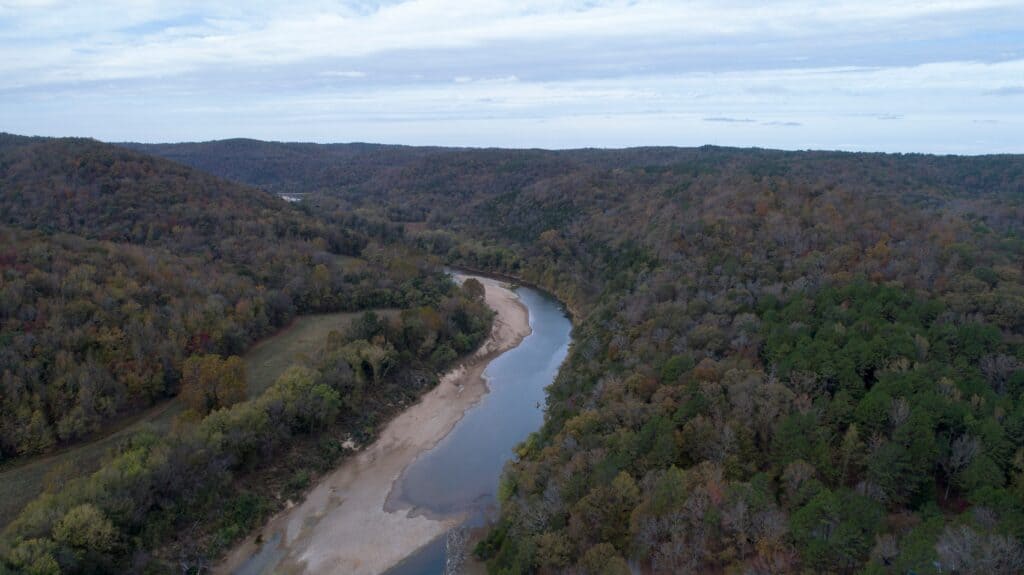
Buffalo National River Overview
Buffalo National River, established in 1972, is one of the few remaining undammed rivers in the lower 48 states of the United States. Located in the Ozark Mountains of northern Arkansas, it flows freely for 135 miles, offering visitors a pristine and picturesque environment for various recreational activities.
Designated as the country’s first national river, Buffalo National River is known for its stunning scenery and diverse wildlife. Surrounded by massive bluffs, visitors can experience running rapids and quiet pools while exploring the park. With only 11% of the overall watershed under direct National Park Service (NPS) management, conservation and preservation of this natural wonder remains a priority.
Visitors to the Buffalo National River can choose from a range of activities, including paddling, hiking, camping, and fishing. The river is divided into three districts – upper, middle, and lower – each with its own unique character and attractions.
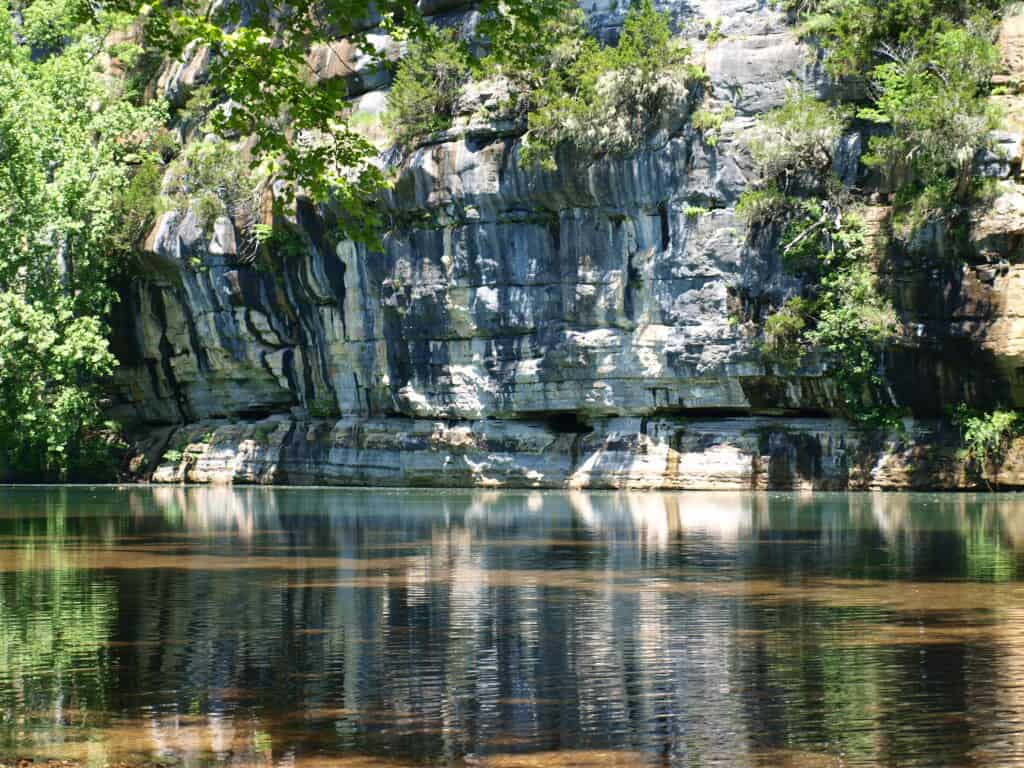
The upper district is where the paddle season typically begins in the spring. This section is ideal for those who seek a more challenging experience, with whitewater kayaking a popular choice. As the water levels are dependent on rainfall, it is crucial to check the conditions of the river before venturing into this part of the park.
In contrast, the middle and lower districts provide a calmer paddling experience, making them more suitable for leisurely canoeing and tubing. These areas also offer numerous campgrounds, trailheads, and river access points, allowing visitors to experience the beauty of the park and the surrounding communities.
A visit to Buffalo National River offers an unforgettable experience of natural beauty, outdoor adventure, and a glimpse into the region’s rich history. Whether you’re an adrenaline junkie or simply seeking a serene escape from the daily grind, this national treasure is sure to captivate and inspire.
Visitor Center and Amenities

The Buffalo National River, spanning 95,000 acres, offers a variety of amenities and facilities for visitors. At the heart of the park is the Tyler Bend Visitor Center, which provides essential information for planning your visit, including maps, brochures, and educational programs. Feel confident in approaching the knowledgeable staff, as they are available to assist you in navigating the park’s various trails and activities.
A variety of amenities are available to enhance your experience at Buffalo National River. Visitors can expect to find clean restrooms and picnic areas. In addition, some areas of the park have limited services such as camping and shuttle services.
While there are no restaurants or bars within the national park, the surrounding towns offer a range of dining options to suit your tastes. Buffalo National River is located in the Arkansas Ozarks, a region known for its charming hospitality and down-to-earth vibe. Venture into nearby towns like Harrison, AR, to explore local eateries and relaxed dining opportunities.
Outdoor recreation is key at Buffalo National River, so remember to pack your own food and beverages for a picnic-style meal along the river. Dispose of waste responsibly to preserve the park’s natural beauty.
In conclusion, the Buffalo National River Visitor Center and its varied amenities help ensure a comfortable and enjoyable experience for all visitors. Whether you seek outdoor adventures or a peaceful day communing with nature, this unique destination has much to offer.
Water Adventures
Canoeing and Kayaking
Buffalo National River offers numerous opportunities for canoeing and kayaking, providing adventurers with a chance to explore the river’s pristine beauty. A variety of outfitters are available to help you plan your trip, offering kayak rentals and other gear necessary for a safe and enjoyable experience. Canoe and kayak trips cater to different skill levels, ensuring both beginners and experts can enjoy the river’s calm waters and thrilling rapids.
- Buffalo National River float service: choose an outfitter to make sure your trip is well-planned and runs smoothly
- Rentals: secure a canoe or kayak to suit your needs and preferences
- Paddling: learn the basics or hone your skills on the river
Rafting and Floating

For those seeking a more leisurely experience, rafting and floating are also popular activities on the Buffalo National River. Embark on a float trip to explore the river’s diverse landscape, including towering cliffs, dense forests, and abundant wildlife. Floating down the river allows you to take in its stunning natural beauty while enjoying a relaxing day under the sun.
- Book a multi-day float trip: plan your adventure with the help of experienced outfitters
- Choose from various routes: tailor your trip to fit your desired level of adventure and relaxation
- River trip essentials: pack sunscreen, water, snacks, and life jackets to ensure a comfortable and safe experience
For a memorable water adventure, the Buffalo National River offers various options for canoeing, kayaking, rafting, and floating. With the help of outfitters and rental services, you can plan an unforgettable journey through the river’s breathtaking scenery.
Hiking and Trails
At Buffalo National River, you’ll find a variety of hiking trails that cater to different skill levels and showcase the park’s diverse landscape. Whether you’re a novice hiker or an experienced adventurer, these trails offer something for everyone.
Ozark Mountain Trails
The Ozark Mountain trails feature rugged terrain, lush forests, and breathtaking views. Among the popular trails in this region is the Lost Valley Trail, which boasts a cascading waterfall, a natural bridge, and a cave. Another must-visit trail is the Whitaker Point Trail, commonly known as Hawksbill Crag, offering panoramic views of the Ozark Mountains.
- Lost Valley Trail:
- Length: 2.3 miles
- Difficulty: Easy
- Whitaker Point Trail:
- Length: 2.9 miles
- Difficulty: Moderate
River Bluff Trails
For those looking to explore the banks of the scenic Buffalo River, the River Bluff trails are a perfect choice. One of the standout trails in this category is the Big Bluff Trail, also known as the Goat Trail. This trail takes you along the towering cliffs overlooking the river and provides stunning views of the water and surrounding landscape.
Another fantastic option is the Buffalo River Trail, which stretches 37 miles and offers various trailheads allowing hikers to explore as much or as little of the trail as they wish.
- Big Bluff Trail:
- Length: 6.3 miles
- Difficulty: Difficult
- Buffalo River Trail:
- Length: 37 miles
- Difficulty: Moderate to Difficult
While hiking in Buffalo National River, remember to follow proper trail etiquette and leave no trace principles to maintain the park’s natural beauty.
Keep in mind that certain trails allow dogs, including the three Buffalo Point Campground trails (Forest Trail, Campground Trail, Overlook Trail), the Tyler Bend Campground trails (Spring Hollow Trail, Buck Ridge Trail, Rock Wall Trail), Mill Creek Trail, Villines Homestead Trail, and the Buffalo River Trail between Ponca and Steel Creek only.
Camping Options

Buffalo National River offers a variety of camping options for visitors. Along the river, there are multiple campgrounds suitable for both tent camping and RV parking. Some of the most popular campgrounds are Steel Creek, Tyler Bend, and Buffalo Point. In this section, we will explore these three campgrounds as well as the general amenities you can expect during your stay.
Campgrounds Along the River
Steel Creek Campground: This campground is located about 3 miles east of Ponca, Arkansas, off of Highway 74. The Steel Creek Campground consists of 26 tent campsites and 14 horse campgrounds. All sites cost $20 per site, per night. The campground is known for its iconic bluffs and close proximity to various hiking trails and a fun watering hole with a rope swing. Additionally, it offers a take-out area to launch watercraft.
Tyler Bend Campground: Tyler Bend is another popular destination within the Buffalo National River region. It features 10 walk-in tent sites, 28 drive-in sites for RVs or tents, and 2 group sites. There are also amenities like a picnic area, playground, pavilions, and restrooms. For more information on reservations and fees, visit the National Park Service website.
Buffalo Point Campground: Buffalo Point is a seasonal campground offering year-round camping options for RV and tent campers. The campground has 83 sites and provides modern amenities such as flush toilets, showers, and laundry facilities. For those interested in exploring the area’s cultural history, there is an amphitheater and historic structures nearby. Visit the Buffalo Point Campground page for more details on how to reserve a campsite during your visit.
In addition to the aforementioned campgrounds, Buffalo National River offers numerous other camping options like group sites, pavilions, and horse camps. No matter your preferred style of camping, the Buffalo National River area provides plenty of options for every visitor looking to enjoy the great outdoors in a confident, knowledgeable, neutral, and clear manner.
Fishing and Wildlife
Fishing is a popular activity at Buffalo National River, offering you the opportunity to catch bass, perch, and catfish in its clear waters. Smallmouth bass are the primary catch in the Upper Buffalo River, while spotted bass and largemouth bass become more common downstream of Pruitt. The Arkansas Fishing Guidebook provides detailed rules and regulations for fishing in the area, which can be found at the park’s visitor centers.
Wildlife Watching

The Buffalo National River is not only a great fishing destination but also an excellent place for wildlife watching. The park is home to abundant wildlife, including white-tailed deer, elk, and a variety of bird species. The Ponca Wilderness, a part of the Buffalo National River, provides a habitat for many of these species, making it a popular spot for wildlife enthusiasts.
To enhance your wildlife watching experience, it is recommended to visit during early morning or late afternoon hours when animals are most active. Be sure to maintain a safe distance from the animals and observe them quietly to avoid disturbing their natural behavior.
Outdoor Activities
Buffalo National River offers a variety of outdoor activities for visitors seeking adventure and fun. The park’s picturesque scenery and well-maintained trails invite you to connect with nature and enjoy different recreation options, such as horseback riding and mountain biking.
Equestrian Trails and Horseback Riding
The park provides several trails suited for horseback riding opportunities for equestrian enthusiasts. These trails take riders through diverse landscapes like forests, riverbanks, and meadows. They offer a unique way to explore the area while communing with nature and experiencing the park from a different perspective.
When planning a weekend ride, make sure to check the park regulations and guidelines for bringing your own horse. Remember that some trails may have seasonal closures or restrictions, so knowing the current trail conditions is essential for a safe and enjoyable experience.
Mountain Biking
Mountain biking is another popular outdoor adventure at Buffalo National River. Although off-road cycling is restricted to designated multi-use trails, the park offers various routes for both beginners and experienced bikers. These mountain biking trails provide challenging terrain and scenic views of the surrounding hills, valleys, and river overlooks.
Visitors can spend a weekend exploring the park’s well-maintained trails and experiencing challenging ascents and exhilarating downhills. Keep an eye out for wildlife, as the park is home to diverse species such as white-tailed deer, elk, and various bird species.
By participating in these outdoor activities, visitors can immerse themselves in the natural beauty of Buffalo National River while enjoying unique and memorable adventures.
Historic and Prehistoric Sites

Buffalo National River is home to a rich diversity of cultural resources and historic sites, including prehistoric village and shelter sites, historic farmsteads, mining sites, and Civilian Conservation Corps structures. Within the park, you’ll find numerous sites to explore that reflect the region’s deep history dating back more than 10,000 years.
One example of a significant site in the park is the Boxley Historic District near Ponca, Arkansas. This area includes the historic Boxley Mill, which was once a popular gathering spot for families waiting for their flour. The district showcases the Villines family’s role in the development of Newton County, Arkansas, providing visitors with a glimpse into the past.
Another area of interest within the park is Erbie, a historic mining district located near the river. This district offers insights into the area’s mining history and its impact on the development of the region. You can explore the old mine structures, remnants of past operations, and gain a deeper understanding of the lives of those who inhabited the area.
For those interested in prehistoric sites, Buffalo National River contains various locations highlighting the region’s long and diverse human history. Many prehistoric village and shelter sites are scattered throughout the park, some dating back over 10,000 years. These locations enable visitors to learn about the early inhabitants of the area and how they interacted with their environment.
In summary, Buffalo National River offers a wealth of opportunities to explore both historic and prehistoric sites, reflecting the region’s diverse heritage. Whether you’re visiting historic homesteads, mining districts, or ancient village sites, you can immerse yourself in the rich history of the area while enjoying the natural beauty of this unique national treasure.
Natural Features and Scenery
Buffalo National River, located in the heart of the Ozark Mountains, showcases a variety of stunning natural features and breathtaking scenery that attracts visitors from all over. Meandering through the region commonly referred to as the “Natural State”, the river offers pristine views of picturesque waterfalls, towering bluffs, and diverse flora and fauna. This section mainly focuses on the caves and springs which enrich the overall experience for visitors.
Caves
The area surrounding Buffalo National River houses a number of hidden gems in the form of limestone caves. These subterranean marvels provide a thrilling venture for spelunkers and casual visitors alike. As you explore the area, it’s essential to exercise caution and adhere to National Park Service guidelines for safety and conservation purposes.
Springs
Buffalo National River boasts an abundance of springs, which significantly contribute to the river’s flow. One such noteworthy spot is Woolum, where a spring-fed creek meets the river. These springs not only provide a serene setting for visitors but also help maintain the area’s rich biodiversity.
In addition to the captivating caves and springs, visitors to Buffalo National River are treated to captivating views of majestic bluffs and peaks formed by the region’s limestone geology. The Hemmed-in Hollow Waterfall, a particularly striking sight, stands as the tallest waterfall between the Rockies and Appalachians. Its enchanting beauty is sure to leave you in awe of the magnificent natural landscapes found within the park.
Travel and Lodging

Cabin Rentals
At Buffalo National River, you can find both rustic and modern cabins for rental, located at the Buffalo Point. These cabins are popular among tourists and can be reserved up to 15 months in advance. The Buffalo Point Concession operates the only accommodations within the park boundary. Staying in a cabin can provide a cozy and serene experience surrounded by nature, perfect for those seeking relaxation or adventure through nearby hikes, canoeing, and kayaking.
Hotels and Motels
For visitors looking for alternative accommodation options outside the park boundary, nearby cities like Marshall, AR, Yellville, AR, and Harrison offer a variety of hotels and motels. These locations cater to different budgets and preferences, allowing tourists to find the perfect base while exploring the Buffalo National River area. The tourism calendar in this region is often filled with exciting events and activities, especially during the Memorial Day to Labor Day period, making it a fantastic destination for outdoor enthusiasts.
During your stay, not only can you enjoy the vast array of water-based activities, such as canoeing and kayaking, but also take part in scenic drives and discover wheelchair-accessible trails around the park. Explore the Buffalo River – National Park Region for more lodging options and make the most of your visit to this stunning natural wonder.

River Conditions and Safety
At the Buffalo National River, it’s essential to be mindful of the river conditions and prioritize safety for a fantastic experience. The river conditions are primarily affected by the weather and water levels.
Weather
The weather at Buffalo National River can directly influence the water levels. Rain, in particular, can raise the river levels, making certain sections more dangerous for recreational activities. Therefore, it is crucial to check the local weather forecast before planning any outings in the area, as conditions may change rapidly. You can monitor the weather on the National Park Service website for up-to-date information.
Water Levels
Water levels on the Buffalo National River play a significant role in river safety and accessibility. The Upper Buffalo and Lower Buffalo sections may have different water levels due to their distinct geographical features. Monitoring and understanding the river levels in the area are crucial for a safe experience.
For more accurate information, there are gauges installed along the river to measure water levels. These gauges have established guidelines to help visitors understand the current conditions. You can find essential details on water levels on the National Park Service website.
Traveling in the backcountry and floating the river come with inherent risks. Buffalo National River comprises over 94,000 acres, and visitors must assume complete responsibility for their safety. General precautions include being aware of your surroundings, checking for hazards, and following safety guidelines provided by the park.
Parks and Recreation Areas
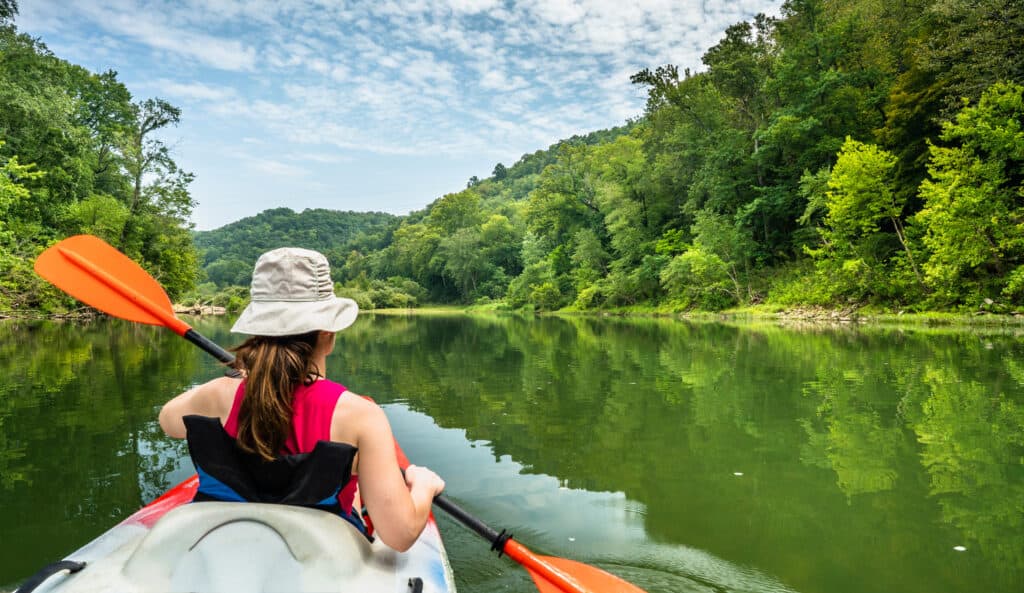
The Buffalo National River, managed by the National Park Service, is known for being America’s first national river and offers a wide range of recreational activities. Spanning 135 miles, the river flows through the Arkansas Ozarks and boasts exciting rapids, tranquil pools, and stunning limestone bluffs.
In the Upper Buffalo River region, you’ll find the small town of Ponca, which serves as a popular starting point for those wanting to explore the river’s many trails and outdoor adventures. The Buffalo Outdoor Center is a hub for recreational activities such as canoeing, kayaking, hiking, and camping. Here, you can also join guided tours to fully experience the beauty of the river and its surrounding landscapes.
The Lower Buffalo River offers a more serene and remote experience, where visitors can enjoy scenic drives and explore untouched areas of the park. Highways 7, 43, and 62/65 out of Harrison, Arkansas provide access to different sections of the river, although GPS systems may not always be reliable. It is recommended to check the park’s map and call ahead for directions.
Both the Upper and Lower Buffalo River areas provide numerous camping options with various amenities, allowing visitors to stay close to the action. Many of these campsites are managed by the National Park Service and cater to different types of visitors, from those seeking a more rustic experience to those who prefer modern conveniences.
Additionally, the park offers several guided services authorized to operate within its boundaries. These businesses can enhance your visit with specialized tours and expert knowledge of the area.
Whether you choose to explore the bustling Upper Buffalo River or the tranquil Lower Buffalo River, the Buffalo National River provides countless opportunities for outdoor adventure and unforgettable experiences in one of America’s most cherished parks.
Buffalo National River Business
Buffalo National River, located in northern Arkansas, offers various business opportunities and services to cater to the needs of visitors. The river flows near the towns of Little Rock and Harrison, providing tourists with access to various amenities and river-based activities like floating and canoeing.
Several outfitters operate in the area, offering Buffalo River float services for a range of experience levels. These businesses provide equipment rental, shuttle services, and guided tours, ensuring a hassle-free and enjoyable journey down this beautiful wild river.
In addition to float services, visitors can find various lodging options such as cabins, lodges, and hotels in the surrounding towns, including Harrison and Little Rock. Moreover, the park itself maintains a number of well-maintained campgrounds close to the banks of the Buffalo River. Amenities offered at each campground vary, and visitors can find a campsite that suits their needs.
When it comes to dining, visitors can choose from a selection of local restaurants offering a taste of Arkansas cuisine. Shopping opportunities also exist in the towns, providing tourists with a chance to buy souvenirs and essential supplies for their trip.
Overall, the businesses around Buffalo National River cater to the needs of every visitor, ensuring a memorable experience exploring this magnificent natural wonder.
Conclusion
In conclusion, Buffalo River State Park stands as a testimony to nature’s artistic prowess and conservationists’ determination. It offers a vast expanse of wilderness to be explored, experienced, and enjoyed. The park’s appeal extends beyond its majestic waterways, providing a diverse range of outdoor activities from hiking, fishing, and kayaking to wildlife viewing, and camping. Its rich historical significance and abundant natural beauty offer an immersive experience for visitors, creating memories that will last a lifetime.
Whether you’re an adventure enthusiast, a history buff, or someone looking for tranquil scenery, Buffalo River State Park promises to exceed your expectations with its wealth of offerings. A visit here not only offers a chance to reconnect with nature but also serves as a reminder of the need to protect and preserve these irreplaceable landscapes for future generations. Embrace the opportunity to immerse yourself in the pure, untouched beauty of Buffalo River State Park, a place where nature and history seamlessly intertwine.


